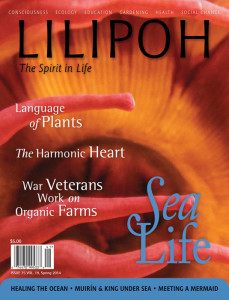Children’s Questions
 By Nancy Blanning
By Nancy Blanning
What Are They Really Asking?
Little children ask endless questions. Their initial wordless finger-pointing, which might mean “Take me there,” “What is that?” or “I want,” eventually gives way to verbalization. The first questions begin to emerge at about eighteen to twenty-four months, and are mostly “What?” But the third year brings more “w” questions: who? when? where? and why? When children are just beginning to question, it is easy for our answers to be guided by their young state of consciousness that is just awakening to the world around them. A simple answer is fully satisfying. “That is a cow. When the cow talks, she says, ‘moo.’” If we have the restraint to stop there, most often the child feels he has an adequate answer and asks no more. He takes in the visual impression and the word, and starts to build up his construct of the world, matching the picture of what he has seen in real life with its name. Impressions become memory pictures linked with words. He begins to build the essential foundation that his understanding of the world is built upon.
The little child starts with broad concepts, really universal words. For one child “Dada” meant Daddy, Mommy, Grandma, and doggie—all the essential beings in her life at that time. She gradually began to discriminate one from the other in her own time. She listened and absorbed from the language around her as part of life, not from elaborate explanations.
When more complex questions arise, our modern orientation is eager to start sharing scientific facts and details with little children to give them an intellectual head start in this competitive world. In response to the question, “Where does the sun go at night?” we are strongly tempted to describe the rotation of the earth, and the sun and earth as part of the solar system. We might just throw in the moon and its relationship to the earth, for good measure. All this may be true from a scientific perspective, but it is very abstract; it is merely words that the child cannot relate to actual experience. The child’s question is much more likely asking, “Why is it dark?” He will be satisfied and reassured with, “The sun has shone so brightly all day that it is tired. Now it is going to sleep.” This is an answer that resonates with the child’s level of experience—getting tired and needing rest. Even the big and powerful sun needs to rest, just like the child. Pictorial answers like these are comprehensible because the explanation relates to something the child experiences himself.
Adults tend to over-explain with lots of facts. This tendency comes out of our excitement to share our knowledge and interests with our children, but it can also be motivated by the fearfulness that permeates our society. We can be rattled with anxiety that our children will not learn enough, fast enough, to navigate a satisfying life. The world is racing by us so fast that we can hardly keep up with it. Will our children be competent and competitive? We worry about them.
We needn’t. The time for scientific facts will come, and the children will be eager for them. In Waldorf education this begins in earnest in the middle school years when facts can be added to a rich, solid foundation built on truthful yet simple pictorial answers. Too much explaining can be overwhelming. When your child asks a question, try giving a simple answer, and then stop. If the child really wants more, she will ask. Many children’s questions are really asking for reassurance about how something fits into their own lives; they are not asking for a factual discourse. If we truly watch and listen, our children will guide us to understand what their questions are really asking.
